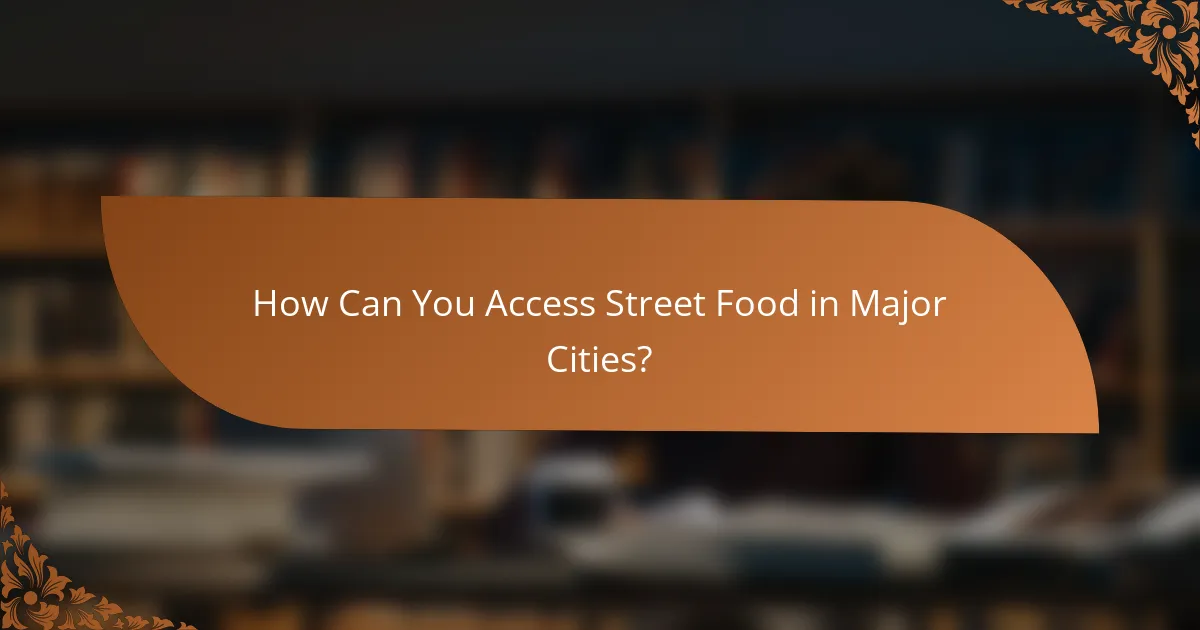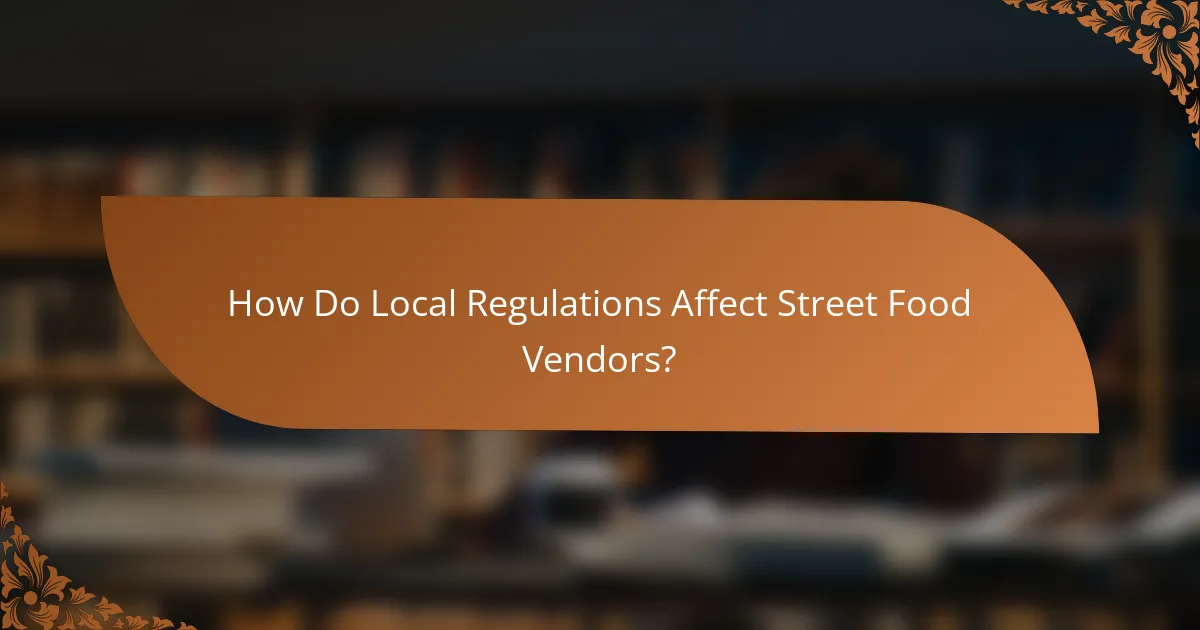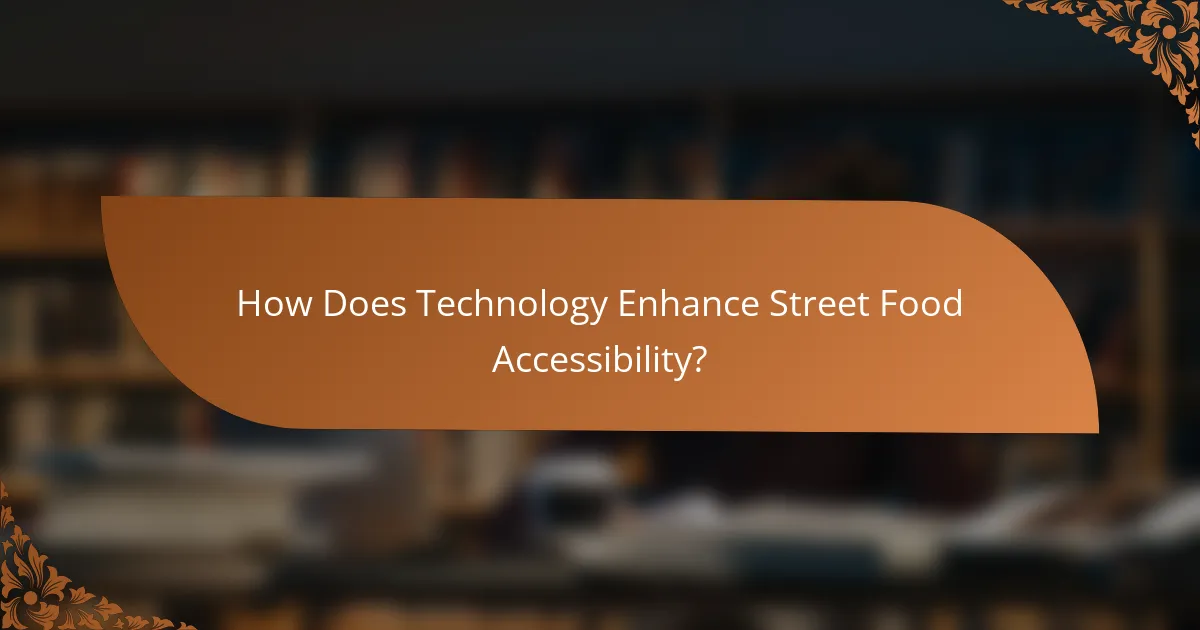Accessing street food in major cities has become increasingly convenient, thanks to a variety of resources that connect food enthusiasts with local vendors. Cities like Bangkok, Mexico City, and New York City boast vibrant street food cultures, offering a plethora of affordable and delicious options for both locals and tourists. However, challenges such as health regulations and urban zoning laws can impact the accessibility and availability of these culinary delights.

How Can You Access Street Food in Major Cities?
Accessing street food in major cities is straightforward, thanks to various resources that connect food lovers with local vendors. Mobile apps, food tours, and online platforms enhance the experience, making it easier to discover and enjoy diverse culinary offerings.
Mobile apps for street food
Mobile apps are a popular way to find street food in urban areas. Many applications, such as Yelp, Google Maps, and specialized street food apps, allow users to search for nearby vendors, read reviews, and view menus. These apps often include features like GPS navigation, helping you locate food stalls quickly.
When using mobile apps, consider checking for user ratings and photos to gauge the quality of the food. Some apps may offer exclusive deals or discounts, so keep an eye out for promotions that can enhance your street food experience.
Local food tours
Local food tours provide an organized way to explore street food in major cities. These tours typically guide participants through various neighborhoods, stopping at popular food stalls to sample local specialties. Engaging with knowledgeable guides can enrich your understanding of the culinary culture and history behind the dishes.
When selecting a food tour, look for options that cater to your dietary preferences and interests. Many tours operate on a fixed price, often including several tastings, which can be a cost-effective way to try multiple dishes in one outing.
Online platforms for street food vendors
Online platforms, such as social media and dedicated websites, serve as valuable resources for discovering street food vendors. Many vendors promote their offerings through Instagram or Facebook, showcasing their menus and locations. This direct engagement allows food enthusiasts to stay updated on new dishes and special events.
Consider following local street food groups or pages to receive recommendations and updates. Some platforms may also facilitate pre-orders or reservations, ensuring you don’t miss out on popular items during peak times.

What Are the Best Cities for Street Food Accessibility?
Some of the best cities for street food accessibility include Bangkok, Mexico City, and New York City. These urban centers offer a vibrant street food culture with diverse options, making it easy for locals and tourists to enjoy affordable and delicious meals on the go.
Bangkok street food scene
Bangkok is renowned for its bustling street food scene, where vendors serve a variety of dishes from early morning until late at night. Popular options include pad thai, som tam (papaya salad), and various grilled meats, often available for just a few dollars.
To navigate Bangkok’s street food, head to areas like Yaowarat (Chinatown) or Sukhumvit, where food stalls are plentiful. Keep an eye out for busy stalls, as high customer turnover often indicates fresher food.
Mexico City food markets
Mexico City boasts numerous food markets, such as Mercado de San Juan and Mercado de Coyoacán, where you can find an array of traditional dishes like tacos, tamales, and elote (corn on the cob). These markets provide a lively atmosphere and a chance to sample local flavors.
When visiting these markets, consider trying a variety of dishes from different vendors to experience the full spectrum of Mexican street food. Prices are generally low, often ranging from 20 to 100 Mexican pesos per item, making it easy to enjoy a meal without breaking the bank.
New York City food trucks
New York City is famous for its diverse food truck scene, offering everything from classic hot dogs to gourmet fusion cuisine. Food trucks can be found throughout the city, particularly in busy areas like Midtown and near popular attractions.
To make the most of NYC’s food trucks, check online for locations and schedules, as they often rotate spots. Expect to pay between $5 and $15 for a meal, depending on the type of cuisine. Be mindful of long lines during peak hours, and try to arrive early to avoid waiting too long.

What Are the Challenges of Street Food Accessibility?
Street food accessibility faces several challenges, including health regulations, urban zoning laws, and the seasonal nature of vendors. These factors can limit where and when street food can be enjoyed, impacting both vendors and consumers.
Health and safety regulations
Health and safety regulations are critical for ensuring that street food is safe for consumption. Vendors must comply with local health codes, which often require permits, regular inspections, and adherence to food handling standards. Failure to meet these regulations can lead to fines or the closure of food stalls.
In many cities, these regulations vary significantly. For instance, some areas may require food vendors to have specific certifications or undergo training, while others may have more lenient requirements. Vendors should familiarize themselves with local laws to avoid compliance issues.
Urban zoning laws
Urban zoning laws dictate where street food vendors can operate, often limiting them to designated areas. These laws can restrict access to high-traffic locations, making it difficult for vendors to attract customers. In some cities, street food is only allowed in specific zones or during certain hours.
Understanding these zoning regulations is essential for both vendors and consumers. Vendors should research local zoning maps and regulations to identify potential locations, while consumers may need to seek out specific areas known for street food offerings.
Seasonal availability of vendors
The availability of street food vendors can fluctuate with the seasons, impacting accessibility. Many vendors operate primarily during warmer months, while colder weather can lead to reduced hours or temporary closures. This seasonal variability can affect the types of food available and the overall street food experience.
Consumers should be aware of these seasonal patterns when planning to enjoy street food. Checking local vendor schedules or social media updates can help identify when and where to find favorite vendors throughout the year.

How Do Local Regulations Affect Street Food Vendors?
Local regulations significantly impact street food vendors by dictating the legal framework within which they operate. These rules can determine everything from where vendors can set up shop to the types of food they can sell, influencing their overall business viability.
Licensing requirements
Licensing requirements for street food vendors vary widely by city and country. Typically, vendors must obtain a business license, which may involve submitting an application and paying a fee. For example, in many U.S. cities, this fee can range from a few hundred to several thousand dollars, depending on the location and type of food sold.
In addition to a business license, vendors may need specific food handling permits or health department certifications. These ensure that vendors meet local health and safety standards, which can include food storage practices and sanitation measures.
Permitting processes
The permitting process for street food vendors often involves multiple steps, including submitting detailed plans for their operations. Vendors may need to provide information on their menu, equipment, and intended location. This process can take several weeks to months, depending on the jurisdiction.
Common pitfalls include failing to comply with local zoning laws or not securing the necessary permits before starting operations. Vendors should check with local government offices to understand the specific requirements and timelines for their area to avoid delays and fines.

What Are the Best Practices for Supporting Street Food Accessibility?
Supporting street food accessibility involves creating an inclusive environment where diverse communities can enjoy local cuisine. This can be achieved through community engagement, promoting events, and ensuring regulatory compliance to enhance visibility and availability of street food options.
Community engagement initiatives
Community engagement initiatives are essential for understanding the needs of local populations regarding street food accessibility. Involving residents in planning and decision-making can lead to more inclusive policies that reflect the community’s preferences.
For example, organizing workshops or forums where locals can voice their opinions can help identify barriers to access and generate ideas for improvement. Collaborating with local organizations can also amplify outreach efforts and foster a sense of ownership among community members.
Promoting local food events
Promoting local food events is a practical way to enhance street food accessibility and visibility. Events such as food festivals or street fairs can attract diverse crowds and showcase various vendors, making it easier for people to discover new culinary options.
Consider partnering with local businesses and city officials to host regular events that highlight street food culture. Offering incentives for vendors to participate, such as reduced fees or marketing support, can also encourage a wider variety of offerings and improve overall accessibility.

How Does Technology Enhance Street Food Accessibility?
Technology significantly improves street food accessibility by streamlining ordering processes and enhancing vendor visibility. Online platforms and social media allow consumers to easily find and order from local food vendors, making it simpler to enjoy diverse culinary options.
Online ordering systems
Online ordering systems enable street food vendors to reach a broader audience by allowing customers to place orders via apps or websites. This convenience reduces wait times and helps vendors manage their inventory more effectively.
Many vendors use platforms like Uber Eats or DoorDash, which charge a commission but provide exposure to a large customer base. Alternatively, vendors can create their own websites or apps, which may require more upfront investment but can lead to higher profit margins in the long run.
Social media marketing for vendors
Social media marketing is crucial for street food vendors to build a loyal customer base and attract new patrons. Platforms like Instagram and Facebook allow vendors to showcase their dishes, share customer testimonials, and announce special promotions.
Engaging content, such as high-quality photos and videos of food preparation, can significantly increase visibility. Vendors should consider using targeted ads to reach specific demographics, ensuring their marketing efforts are effective and yield a good return on investment.
